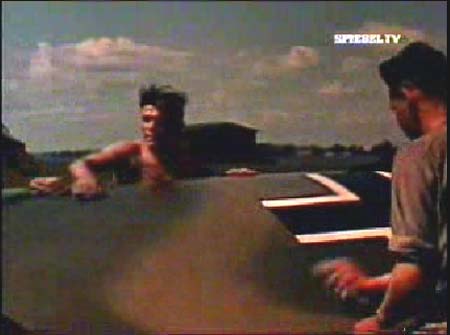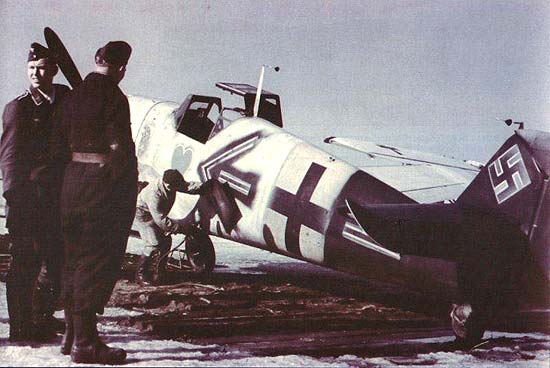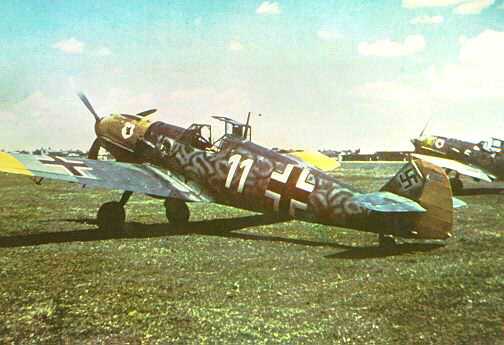|
Ostfront |
The Eastern Front presented huge logistical difficulties for the Luftwaffe from all aspects; the wildly varying seasonal changes and disparate operating climates led to a fascinating mixture of camouflage schemes being used, with one unit simply throwing away the rulebook and doing what they felt best!
| The first series of photos are of a pair of 1./JG52 Gustavs at Kharkov-Roganj in the summer of 1943. According to the Prien-Rodeike F-G-K book, "weiße 10" may have been W.Nr. 19881, lost on 14 Sept 1943 when the Kommodore's wingman Lt. Wilmans failed to return after an air battle near Turkenovka and was posted as missing. |
|
When it comes to color schemes, JG54 threw the book out the window. Their aircraft carried an amazing variety of field-modified schemes, and this stunning example is no different. What is that brown color? That doesn't appear to be a standard RLM color...maybe RLM26, but that would be highly unusual at best. Everything about this aircraft contradicts "popular" conceptions of 109s and their markings...note the Gruppe bar is FORWARD of the T.O. circle, and the Stab chevron is AFT of the fuselage Balkankreuz. And that isn't all...look at the photo of the fin, and how the six kill bars reflect in the polished surface of the stabilizers. Is it any wonder that JG54 aircraft are so popular with Luftwaffe modelers? |
|
| The next series of photos are actually modified screen shots taken from the video found in the Multimedia gallery...this is the F-4(z?) of the Technical Officer of II/JG54 (Werner Pichon Kalau vom Hofe) presumably photographed in the summer of 1942 at Rjelbitzi. |
| And if there's any more questions about whether the aircraft were polished or not, this should set them to rest; in the video, you can see several Schwarzmänner "Simonizing" the starboard wing as shown at right. |  |
 |
At left is
the G-2 of the Geschwaderkommodore of JG54, Hannes Trautloft, seen receiving
a white distemper overspray. The color registration in the picture
is fairly light, and a Photoshop session did not do much to improve the
situation; that said, the tone of the yellow fuselage band is light in any
event, and very likely to be RLM27. The aft fuselage may be in 70
Schwarzgrün, but not for much longer...
The masking method used by the painter is worthy of note...has anyone tried this on their 1/48 scale 109 yet? :-) |
 |
Did we mention color? 04 Gelb was specified as the theatre color on Ostfront aircraft, but the first widespread use of theatre markings was during the summer of 1940 during the Battle of Britain. At left we see a former II./JG54 Bf109E now operated by I./JG77, but still carrying both JG54's intricate 71/02/65 scheme and Staffel emblem. |